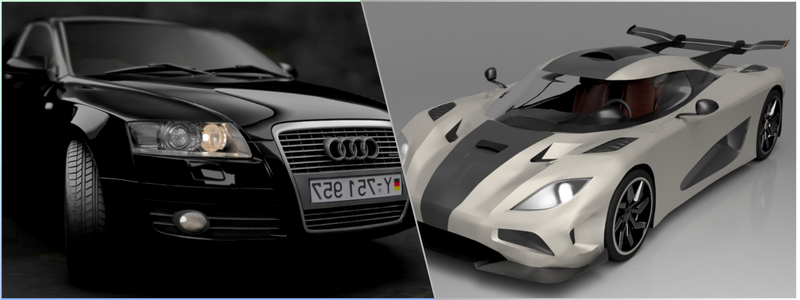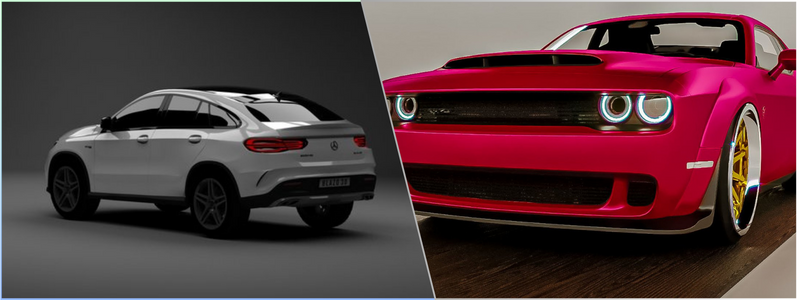First things first, a distinction has to be made between automotive design and automotive engineering. The primary former concerns the appearance of an automobile’s exterior and interior aspects, like cars and trucks. It is the process of developing the aesthetics rather than engineering the drivetrain. Except in a few areas like aerodynamics and downforce, automotive engineering and design do not usually overlap. Automotive design is comprised of several major elements:
- Ideation: an automobile’s basic concept comprises the general shape or layout, style, and intended functionality. In automotive design, a good idea requires a combination of a creative mind and accurate market research because the main point of the design is to appeal to target consumers.
- Options: automakers most likely ask the designers to submit many design options presented in simple pencil sketches. Only those that are considered technically feasible and financially sensible are selected to move forward in the design process.
- Digital Rendering: designers utilize CAD software to convert pencil sketches into three-dimensional models. Automakers develop the general design specifications of the vehicle based on the visualization.
- Prototyping: a physical model is built for testing purposes. It is not the final version but a prototype to review the functionality, safety, and overall appearance.
 Table of contents
Table of contents
RELATED: CAD automotive design – when driving becomes personal
As usual, the design process ends with the production stage. The prototype is further refined and improved to meet the intended specifications before the design goes to mass production. It involves material selection, putting a drivetrain into the shell, assembling the electronic components, and finishing.
Cost of automotive design services
The result of hiring an automotive designer is a “concept” vehicle. There are various types of concept cars, but most are not drivable because they need functional engines fitted in. Few of them can drive short distances due to limitations in performance, safety issues, and a general lack of features. The cost to develop a scaled model is often less than $100,000; a full-sized one can cost upwards of $300,000. The price can be even higher since the full-sized option might be the culmination of smaller models.
A significant portion of the money goes to pay for the manufacturing cost of both the exterior and interior components. An even more substantial amount covers the salaries of automotive designers. According to BLS, an automotive designer is a sub-category of the industrial designer, whose median salary is $77,030 per year. The lowest 10% earns under $44,840 annually, whereas the highest 10% makes more than $128,210 annually.
RELATED: Automotive design & engineering services, costs, rates pricing for companies
However, an aggregated January 2023 salary report by PayScale indicates that automotive designers receive a much higher salary. The median wage is $82,000, ranging from $60,000 for the bottom 10% to $131,000 for the top 10%. Experience is a defining factor in determining the salary range. PayScale offers a superficial overview as follows:
| Automotive Designer Experience | Annual Wage |
| 1 to 4 years | $78,000 |
| 5 to 9 years | $86,000 |
| 10 to 19 years | $100,000 |
An automotive designer with less than a year of experience makes around $67,000 annually. In contrast, one at a late-career stage with at least 20 years of experience receives an annual wage of about $85,000. Most automotive designers indeed work for automakers or related manufacturing design firms, but many are willing to spend time on side projects and offer their expertise to individual clients.
RELATED: How much do mechanical engineer services typically charge for rates & firms?

Step-by-step automotive design process
The timeline starts when the designers take their pencils and draw rough sketches on paper. It will end when a new car from the factory hits the auto show floor. Generally, a brand-new and road-legal design takes about 72 months to develop from concept to full-scale production. Remember that the timeline is for a complete development, including an entirely new chassis and powertrain selection. A design-only project (or redesign of an existing model) takes only half the time. During the 36 months or so development time, the design process generally goes through some stages as follows:
Sketches
A series of manually-drawn “unrefined” sketches come first. This early step usually involves the product concept design expert drawing the most glamorous and borderline superfluous design. A car manufacturer may hire either a single or a team of designers to produce sketches. Ideas and inspirations can come from anywhere, like historical cars, famous models, animals, and perhaps sci-fi media.
Sometimes, an employer also brings onboard freelance designers to submit their original ideas. When the phase ends, hundreds of sketches can be submitted to the lead designer, but only a few will be chosen for further review, and finally, one or two will be picked for different development processes.
RELATED: Get your engine revving: 5 automotive CAD designs
Package
In automotive design, the term “package” refers to the overall geometrical specifications of a particular model. Several selected sketches are further analyzed and refined for packaging considerations. It is the early step where design and design engineering services overlap. A package is about finding the most cosmetically appealing shape and considering potential drivetrain layouts, engine availability, safety requirements, and production.
Based on the package considerations, the sketch is transformed into an early specification sheet filled with general information about dimensions and proportions. The “package” step is where art bumps into technical feasibility. There can be a lot of modifications, although the car itself is still a conceptual design on paper.
RELATED: What is a virtual prototype, and how is it used by companies for product development?
3D modeling
The two-dimensional renderings are transformed into 3D models. CAD software plays a significant role in the task. The primary purpose of 3D Modeling design companies is to visualize the concept so it resembles a physical object, albeit on screen. In addition, realistic visualization helps designers see the dimensions and proportions more comprehensively. 3D Modeling makes it easier to produce a detailed design draft.
Clay modeling
While it might sound old-fashioned in a world where animated rendering has become commonplace, many carmakers still rely on conventional clay modeling by hand. A proficient clay modeling artist must accurately depict a complete car design. Multiple models can be built to compare minor differences among a few design considerations.
In many cases, a clay model of a car is full-size; it is in real-world proportion. Although digital sketching and 3D imaging help visualize a design, there will be a point when automotive designers want to see everything in physical form. They provide detailed sketches to clay sculptors and let the professionals do their jobs.
RELATED: 10 Awesome vehicle designs from the Cad Crowd gallery
Interior Sketch
The early sketches usually include interior designs, but the modeling (both digital and clay) process is done after the exterior. Like the previous steps, 3D interior rendering professionals turn the sketches into 3D digital images and clay models. Everything needs to fit the exterior design, from the seat positioning to the carpet thickness on the floor. The interior design also undergoes several alterations to meet the requirements determined during the package considerations phase.
Materials, Colors, and Elements
Once the exterior and interior layouts are approved, automotive product modeling designers choose the materials, colors, and control elements. The design uses hundreds (if not thousands) of combinations for the paints, accessories, dashboard instruments, trim colors, and accents. The exterior materials are often quite simple, with a selection of metals, plastics, and glass panels.
RELATED: Top 101 engineering and mechanical design firms in the United States
On the other hand, an interior is a place for potentially a convention of materials. In addition to metals and plastics, an interior can be filled with leather, fabrics, and even wood. As for the dashboard elements, the design focuses on the instrumentations and displays. Safety, ergonomics, and comfort are the main design aspects.
Materials Testing
Some car companies implement a rigorous stress test to see how the paint and materials withstand extreme temperatures, acidic rain, and typical wear and tear. When certain parts fail the test (as they deteriorate faster than expected), the 3D machine part modeling designers have to find replacement options. The testing period and parameters vary significantly from one manufacturer to the next.
RELATED: How freelance mechanical engineers use 3D modeling for design

Final Modeling
If all parts and components pass, the exterior and interior are now together for the final modeling process. The design should now resemble a full-scale physical car, commonly called a “concept” car. Although the car lacks the powertrain and all the engineering components, that marketing phase usually begins now. Many automakers display their concepts at an auto show to gauge public interest. The design work ends here, but there can be further refinements if the design goes to production.
Automotive design engineering
Assuming some new shapes and geometries also require specific tooling, the automotive designers continue working with engineering design services (who specialize in tooling) to ensure the factory has the applications necessary to build parts and components. The designers also produce a detailed plan to carry out the construction phases from a bare frame to a complete model.
RELATED: How computer-aided design (CAD) services are used by engineering firms
In most cases, automotive design development follows strict schedules. At any point along the timeline, a design might be thrown away—and therefore, the designers start over—or fundamentally change from the initial idea. It is not uncommon for a “concept” automotive design to come out differently from the production version.
How Cad Crowd can help
Interested in hiring an automotive designer? Find out more about how Cad Crowd connects you with the design services you need to meet your project goals!
